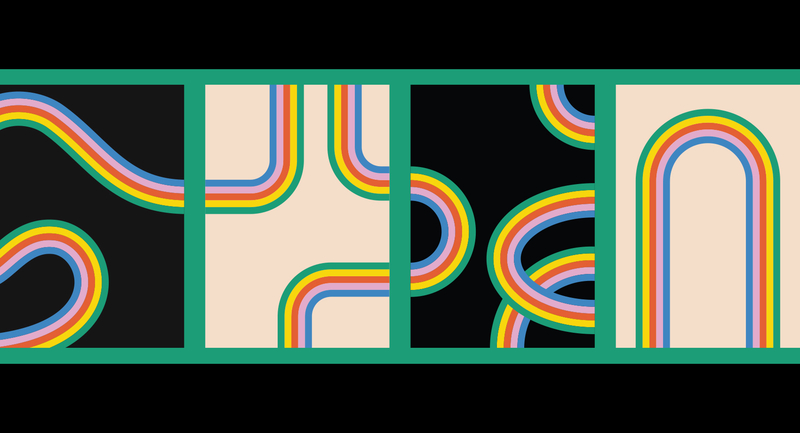October 1, 2023
•
•
Vol. 81•
No. 2New Leaders, Here’s How to Navigate Conflict
Rather than avoiding conflict,
make it serve your school’s growth.
Credit: Barkas / SHUTTERSTOCK
Jamie, a first-year principal, trudged back to her office feeling dejected following the March faculty meeting. The planned agenda, sharing observations from recent learning walks, soon devolved into discord over student discipline and school climate. "The corridors are in chaos," a seasoned veteran complained, "with no consequences for misbehavior."
While a few silent teachers shifted uncomfortably in their seats, more vocal ones blamed Jamie's restorative discipline initiative and a "child-coddling" leadership team. Returning to the office feeling ill-equipped and saddened by the tumultuous meeting, Jamie reflected, This job is a lot harder than I thought. Am I ready for this?
While the presenting issue was discipline, the confrontation itself was most troubling to Jamie, as is true for many school leaders. One study found administrators spend 20–40 percent of their time dealing with dissension (Johnson, 2003), careening from one conflict to the next: parents vs. teachers, teachers vs. teachers, teachers vs. administration, administration vs. school boards, etc. As a related indicator of conflict-filled school climates, a 2019 Education Week survey reported that almost one-third of teachers deemed their principal's contribution to the school's working and learning environment as either somewhat or completely negative or no impact.
The impact of conflict on new leaders like Jamie is particularly corrosive, magnifying principals' stress levels and accelerating their turnover. Many leaders try to avoid disagreement altogether because it makes everyone uncomfortable; as a result, they might neglect the most consequential issues in education, such as systemic inequities.
In addition to conflicts among school staff and with parents, education leaders bear the brunt of today's contentious national mood, which has seeped into school board meetings and disputes over curriculum. Not that political upheaval over curriculum and cultural discontent spilling into schools is anything new: Recall, for example, the Scopes "Monkey Trial" in the 1920s and school desegregation battles in the mid-20th century. The tone of debate in our nation's schools today echoes—though perhaps exceeds—the vitriol of the past.
Jamie's training in school leadership had offered little in the way of preparation for these on-the-job tensions. For the most part, training relied on generic platitudes about the importance of trust and being a good listener. Much could have been added to this knowledge base. Although it's rarely employed in schools, there are a wealth of research-based skills and conflict remediation techniques from fields like organizational psychology, peace studies, and engineering to guide leaders like Jamie.
We believe addressing conflict, rather than suppressing it and allowing deep divisions to fester, leads to increased capacity—for all school staff and in many areas—and a shift in school culture that enables continuous improvement. At the outset, for a new administrator like Jamie, a mindset shift is necessary—from conflict avoidance to conflict acceptance and competence. We propose a set of beliefs and strategies that enhance a leader's conflict agility, defined as the ability to address conflict in a forthright, respectful, and productive manner.
When confronted with criticism, a leader's innate reaction is likely to be fight-or-flight. Amy Gallo (2022), contributing editor at the Harvard Business Review, explains, "Our brain perceives conflict as a threat, and our brain doesn't do a good job of distinguishing between a small threat, like someone rolling their eyes at us, and a big threat, like being chased down by a bear. We often don't make good choices in those moments."
Jamie's initial reaction might've been to become defensive ("I'm always in the hallway") or blaming ("Maybe if you were in the hallway more…"). Tim Flanagan and Craig Runde (2007) advise leaders whose negative emotions are aroused to first slow down and briefly step away physically or mentally. Doing so enables the leader to avoid the propensity to fight-or-flight, and instead take a measured look at the terrain surrounding a particular dispute. Failing to pause and take a deep breath is reminiscent of the analogy of the elephant and the rider. The rider, representing rational thought, believes he is driving the elephant, representing emotions. More likely, the elephant is steering the rider.
One of us (Seth), during the first month of his long career in school leadership, commiserated with an experienced secretary about difficult parents. She wisely and metaphorically noted, "People drop their own baggage on your toes." A basic premise of conflict management is to not take it personally. That's a tough ask for a leader like Jamie who feels dejected and anxious after a tumultuous faculty meeting, but one that will enable a leader to perceive the issues with a lower sense of threat and more rational insight.
A corollary of "don't take it personally" is to focus on ideas, not personalities. Ideas may be examined in a nonthreatening discussion, whereas a focus on the other person's personality and motivation inevitably leads to fault-finding and us-versus-them divisions. In the next faculty meeting, Jamie might acknowledge people's deep feelings about discipline, then channel the debate over discipline practices into an open-minded inquiry into the relative merits of both restorative justice and traditional behavior modification approaches.
Another core principle of conflict agility is to focus first on people's interests rather than diving right into debates on policies and procedures. In Jamie's school, everyone shared a common interest in improving student behavior to create a suitable learning environment and promote character development, but their positions on how to do so varied. In a follow-up meeting, Jamie might point out that they already agreed on the desired destination, they just needed to identify the best route to get there. This technique—known among conflict experts as highlighting agreement while compartmentalizing differences—offers an effective, nonjudgmental way to build bridges between people holding opposing points of view.
Many newly minted school leaders also fall prey to the tendency of people to oversimplify issues into yes/no, either/or alternatives. In Jamie's school, the question of how to rectify students' behavior had split the faculty into two factions, each deeming their position mutually exclusive of the other. This brings us to the subject of cognitive biases, common yet faulty patterns of thought people use to make quick interpretations of perceptions and information. Cognitive biases can facilitate rapid decision making, but they frequently lead to erroneous judgments. Jamie's school was engaged in a cognitive bias known as fool's choice, which limits alternatives to just two, with proponents assuming their favored option applies in every situation.
Confirmation bias is the tendency to seek evidence supporting one's own views while dismissing all contrary facts. For instance, in a debate about school discipline, restorative justice advocates like Jamie may focus on success stories while downplaying the presence of repeat offenders for whom interventions have not resulted in anticipated improvements. On the other hand, the pro-consequences crowd may overlook cases in which consequences have actually exacerbated unwanted behavior, and school data demonstrating that the harshest disciplinary measures are meted out inequitably.
A third common cognitive bias is fundamental attribution error. This refers to the tendency to attribute people's behavior to individual choices while ignoring external factors outside of people's control. A school's staff, students, and families function in a larger system within the school and community, a reality that argues for having a holistic problem-solving orientation rather than blaming individual deficiencies. Fundamental attribution errors result in misleading, oversimplified conclusions. In Jamie's school, this bias could produce reactive remedies that only target miscreant students (and perhaps low-skilled teachers), ignoring evidence that argues for a more systemic, proactive approach.
To reduce the rush to judgment associated with cognitive bias, Jamie could frame the discipline issue as one that must involve changing school culture, increasing engagement in classrooms, updating policies in the wake of the pandemic, promoting cultural competence, and strengthening family involvement.
It's easy for leaders like Jamie—mired in difficult emotions, burdened by cultural norms that preceded their arrival, and limited to a restrictive set of alternatives—to feel stymied and trapped. Yet moments like that tough faculty meeting can offer a new leader a crucial opportunity to shift the mindset of the entire organization. It's a gradual process, but ultimately the solution to cognitive biases is to see the world differently. We propose a new metaphor for leadership (besides common ones like a captain steering the boat or a gardener nurturing seedlings): The role of a leader in circumstances like Jamie's is to be an optometrist collaborating with the faculty to try on a different lens.
Imagine that—to surmount the fools' choice, confirmation bias, and fundamental attribution error biases—Jamie returned to the faculty with a transformative approach that sought to advance their common interests. Realizing teachers need to see a wider range of alternatives and stretch their conception of what's possible, Jamie might spearhead brainstorming sessions in which phrases like "that won't work" and "yes, but," and knee-jerk criticism are banned. She might institute guidelines and ground rules designed to maintain open minds, such as remaining respectful and building on each other's ideas.
A leader like Jamie might use design thinking, a problem-solving process developed in engineering schools, to help their faculty approach problems with new eyes and forge solutions. The first steps in design thinking are exploring contentious issues widely and deeply, then sharply defining the problem to solve. Jamie could lead the faculty in collecting and analyzing hard and soft data that might help them better understand the school's discipline situation, including the number of suspensions and detentions disaggregated by race and income, and parents', students', and staff's perceptions of discipline elicited from surveys and focus group interviews.
In an engineer's thought process, the problem you define is the one you'll attempt to solve. Using the design-thinking process to unearth the root problem behind misbehavior, teachers might ask probing questions like: Why exactly are students misbehaving? Why aren't they positively engaged in learning and the school community? How can we engender closer connections between home and school?
Continuing with design thinking, Jamie's faculty might "ideate" a variety of solutions based on an empathetic understanding and a well-honed definition of the problem. The next two steps could be to try out or "prototype" some of these possible solutions (ones that address people's common interests) and evaluate the results before settling on an optimal, often outside-the-box solution. For example, since there is ambivalence about restorative justice among some staff and parents, Jamie could suggest a one-year pilot in 9th grade only, and work with the committee to identify criteria that will be used to evaluate the program after each quarter. Or, if a survey of students about school climate indicates students need more sense of belonging to the school community, the staff might campaign to increase student involvement in extracurricular activities and personalize learning more.
A distinct benefit of design thinking is its reliance on information gathering and evidence-based outcomes. For Jamie's faculty, collaborative, structured problem solving might yield a mutual understanding of the issues, agreement on solution(s) to try, and ways to measure results. Design thinking also eschews oversimplification and quick fixes; it establishes an expectation that effective solutions result from thorough study, widespread participation, and a commitment to the long haul.
A year has passed since that difficult faculty meeting. Jamie is feeling more confident, less anxious, and better prepared to address the principalship's monumental challenges. Her sense of disillusionment and burnout from the first year on the job have dissipated as both Jamie and the faculty have developed conflict-agility skills. They view inevitable conflict through a new lens, channeling it into opportunities to make school better for everyone.
At faculty meetings, there's now healthy laughter when Jamie reminds the staff to "put aside your confirmation biases" and promises to do the same. A new set of committees regularly applies design thinking to problems that surface, analyzing the problem comprehensively and testing novel solutions. The culture of the school has begun to shift from "us-versus-them" tensions toward openness and collaboration. The faculty's capacity to seek improvement has increased; change is seen less as something threatening and more as "the way we do things here." It's not perfect, but there's a path forward—which is a hopeful sign of Jamie's professional growth in the principalship.
References
•
Education Week Research Center. (2019, October 16). Principals, here's how teachers view you. Education Week.
•
Flanagan, T., & Runde, C. (2007). Becoming a conflict-competent leader: How you and your organization can manage conflict effectively. Jossey-Bass.
•
Gallo, A. (October 5, 2022). Author talks: Turn your work enemies into allies (interview). McKinsey & Co.
•
Johnson, P. (2003). Conflict and the school leader: Expert or novice? Journal of Research for Educational Leaders.
End Notes
•
1 While the scenario presented here is realistic and reflects our experiences in schools, it is hypothetical, and Jamie is a pseudonym.









